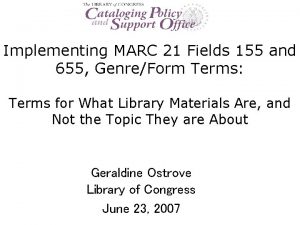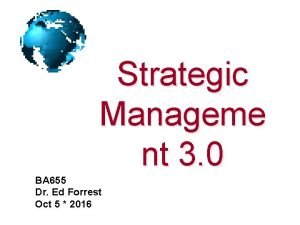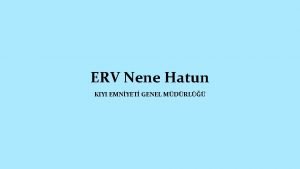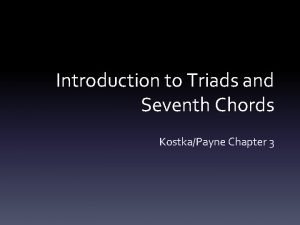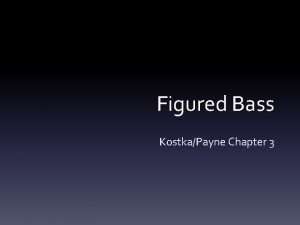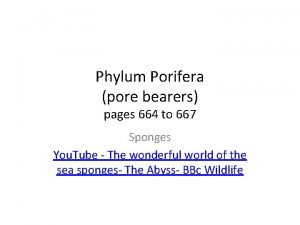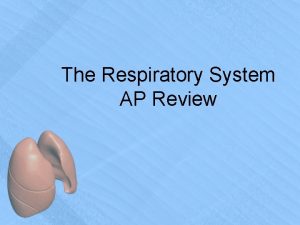The Respiratory System Pages 655 664 Human Respiratory



















- Slides: 19

The Respiratory System Pages 655 - 664

Human Respiratory System Figure 10. 1

Components of the Upper Respiratory Tract Figure 10. 2

Upper Respiratory Tract Functions n n n Passageway for respiration Receptors for smell Filters incoming air to filter larger foreign material Moistens and warms incoming air Resonating chambers for voice

Components of the Lower Respiratory Tract Figure 10. 3

Lower Respiratory Tract n Functions: Larynx: maintains an open airway, routes food and air appropriately, assists in sound production n Trachea: transports air to and from lungs n Bronchi: branch into lungs n Lungs: transport air to alveoli for gas exchange n

Gas Exchange Between the Blood and Alveoli Figure 10. 8 A

Respiratory Cycle Figure 10. 9

Measurement of Lung Capacity Figure 10. 10 A

Regulation of Breathing Figure 10. 13

Regulation of Breathing: Nervous System Involvement n n Carotid and aortic bodies: sensitive to carbon dioxide, p. H, and oxygen levels Conscious control: resides in higher brain centers; ability to modify breath is limited

Disorders of Respiratory System n n n Reduced air flow: asthma, emphysema, bronchitis Infections: pneumonia, tuberculosis, botulism Lung cancer Congestive heart failure Cystic fibrosis

Process of Breathing: Pressure Gradient Inspiration/Expiration: air in/air out n Cycle: n Relaxed state: diaphragm and intercostal muscles relaxed n Inspiration: diaphragm contracts, pulling muscle down, intercostal muscles contract elevating chest wall and expanding volume of chest, lowering pressure in lungs, pulling in air n Expiration: muscles relax, diaphragm resumes dome shape, intercostal muscles allow chest to lower resulting in increase of pressure in chest and expulsion of air n

Smoking and the lungs n n Smoking is extremely bad for the lungs It can lead to lung cancer, emphysema, and an early death

Measurement of Lung Function n Lung volumes and vital capacity n n Tidal volume: volume of air inhaled and exhaled in a single breath Dead space volume: the air that remains in the airways and does not participate in gas exchange Vital capacity: the maximal volume that can be exhaled after maximal inhalation Inspiratory reserve volume: the amount of air that can be inhaled beyond the tidal volume

Measurement of Lung Function (cont. ) n Lung volumes and vital capacity (continued) n n n Expiratory reserve volume: the amount of air that can be forcibly exhaled beyond the tidal volume Residual volume: the amount of air remaining in the lungs, even after a forceful maximal expiration Measurement: spirometer

Gas Exchange & Transport: A Passive Process n Gases diffuse according to their partial pressures n n External respiration: gases exchanged between air and blood Internal respiration: gases exchanged with tissue fluids Oxygen transport: bound to hemoglobin in red blood cells or dissolved in blood plasma Carbon dioxide transport: dissolved in blood plasma, bound to hemoglobin, or in the form of plasma bicarbonate

Regulation of Breathing: Nervous System Involvement n n n Respiratory center in the medulla oblongata: establishes basic breathing pattern Chemical receptors: monitor carbon dioxide, hydrogen ions, and oxygen levels Medulla: sensitive to hydrogen ions in cerebrospinal fluid resulting from carbon dioxide in blood

Four Respiration Processes n n Breathing (ventilation): air in to and out of lungs External respiration: gas exchange between air and blood Internal respiration: gas exchange between blood and tissues Cellular respiration: oxygen use to produce ATP, carbon dioxide as waste
 Printed pages vs web pages
Printed pages vs web pages Marc 655
Marc 655 Ba 655
Ba 655 Norsafe mako 655
Norsafe mako 655 Tmf 664
Tmf 664 Seventh chord inversion symbols
Seventh chord inversion symbols 664-765-4342
664-765-4342 Respiratory zone vs conducting zone
Respiratory zone vs conducting zone Respiratory system circulatory system digestive system
Respiratory system circulatory system digestive system Chapter 7:10 respitory system
Chapter 7:10 respitory system Human.respiratory.system
Human.respiratory.system How respiratory system work with circulatory system
How respiratory system work with circulatory system Circulatory system and respiratory system work together
Circulatory system and respiratory system work together Hát kết hợp bộ gõ cơ thể
Hát kết hợp bộ gõ cơ thể Frameset trong html5
Frameset trong html5 Bổ thể
Bổ thể Tỉ lệ cơ thể trẻ em
Tỉ lệ cơ thể trẻ em Chó sói
Chó sói Tư thế worms-breton
Tư thế worms-breton Hát lên người ơi
Hát lên người ơi

